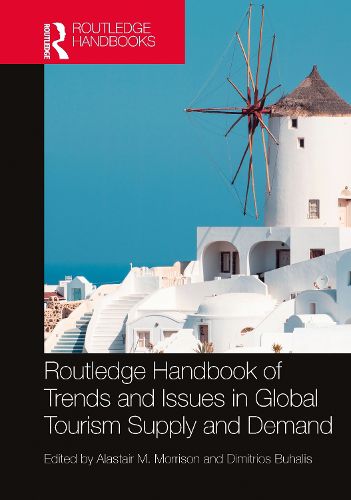Readings Newsletter
Become a Readings Member to make your shopping experience even easier.
Sign in or sign up for free!
You’re not far away from qualifying for FREE standard shipping within Australia
You’ve qualified for FREE standard shipping within Australia
The cart is loading…






This Handbook provides a comprehensive overview of trends and issues in the global supply and demand on tourism.
With contributions from 70 authors, this Handbook showcases a diverse range of perspectives with insights from around the globe. It reviews the interactions among trends and issues, and it emphasises the importance of tracking and interpreting these on a global scale. The book is organized into three parts, with Part I focusing on supply-side trends including transport, attractions, culture, heritage tourism, technology, policies, and destination management. Part II critically reviews the external factor trends, including the impact of terrorism, multi-crisis destinations, Generation Z's important contributions to the sector, the regulation of sharing economy platforms and nature tourism in future. Part III focuses on market-led trends such as bleisure, glamping, VFR travel, transformational tourism and new trends in wellness tourism following the post-COVID era. The book also provides predictions for the upcoming decades.
This Handbook will be a vital tool for researchers, students, and practitioners in the tourism and hospitality sector to further develop their knowledge and expertise in the field. It examines business and policy implications, offering guidance for developing sustainable competitive advantage.
$9.00 standard shipping within Australia
FREE standard shipping within Australia for orders over $100.00
Express & International shipping calculated at checkout
This Handbook provides a comprehensive overview of trends and issues in the global supply and demand on tourism.
With contributions from 70 authors, this Handbook showcases a diverse range of perspectives with insights from around the globe. It reviews the interactions among trends and issues, and it emphasises the importance of tracking and interpreting these on a global scale. The book is organized into three parts, with Part I focusing on supply-side trends including transport, attractions, culture, heritage tourism, technology, policies, and destination management. Part II critically reviews the external factor trends, including the impact of terrorism, multi-crisis destinations, Generation Z's important contributions to the sector, the regulation of sharing economy platforms and nature tourism in future. Part III focuses on market-led trends such as bleisure, glamping, VFR travel, transformational tourism and new trends in wellness tourism following the post-COVID era. The book also provides predictions for the upcoming decades.
This Handbook will be a vital tool for researchers, students, and practitioners in the tourism and hospitality sector to further develop their knowledge and expertise in the field. It examines business and policy implications, offering guidance for developing sustainable competitive advantage.